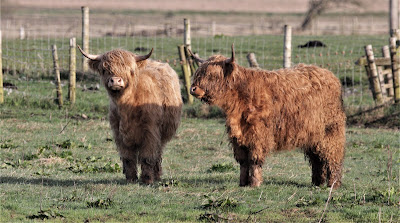Sunday, October 10, 2021
Better Luck Next Time
Friday, May 7, 2021
A Tale Of Two Halves.
Sunday, April 25, 2021
No Show
An hour and two on Saturday at our ground zero Pilling/Cockerham ringing site birds proved birds more varied and in higher numbers. By Saturday afternoon temperatures reached the balmy heights of 15 degrees but it felt cool away from sunshine.
The tiny pool held a pair of Canada Geese with four or five youngsters in tow, the goslings so tiny that they were mostly hidden from view in the grassy undergrowth. Also on the pool - 2 Shelduck, 2 Greylag, 3 Tufted Duck, 2 Moorhen, a pair of Little Grebe, a Little Egret, and a single Reed Warbler in raucous song.
Further exploration found 4 Wheatear, 10 Linnet, 4 Pied Wagtail, 1 Yellow Wagtail, 1 Grey Heron, 1 Buzzard. Three pairs of Oystercatcher show all the signs but seemingly they are yet to lay their eggs.
I think we might have a bash at the Sand Martins next week. At least we know there are plenty on site.
Tuesday, March 30, 2021
Too Few Birds
Tuesday, February 2, 2021
Banned And Baffled
Thursday, September 10, 2020
More Mipits
Saturday, March 28, 2020
Home Birding
“BTO SURVEYS IN THE WIDER COUNTRYSIDE”.
“Following the Government statement on 23 March, our Senior Leadership Team has reviewed the BTO advice and is asking all volunteers to follow the guidelines presented by the Prime Minister. While the monitoring work undertaken by volunteers is extremely important, it must not compromise public health.
To avoid this potential risk, we are requesting that all BTO surveyors, including ringers and nest recorders, refrain from undertaking survey work at sites to which they would need to travel by any means until this guidance is reviewed.”
“All the best and stay safe”.
Dave Leech, Head of Ringing & Nest Recording
James Pearce-Higgins, Director of Science”
------------------------------------------------------------------------------------
Here's my contribution to "Home Birding", the newest buzz phrase for locked down birders with a post first published on Another Bird Blog on 31/12/2011 - New Year’s Eve 2011. Click the pictures for a close-up.
It’s time for recalling the past year’s highlights of birding, ringing and photography. Now is the moment when we choose to forget the low points, the empty pages in a sodden notebook, netting a handful of birds on a seemingly perfect spring morning, or discovering that you set the aperture wrong.
Here we go in rough chronological order with a selection of photos and personal highlights of 2011.
In the early part of the year we holidayed in Egypt at a time when the country was undergoing a revolution, but the confiding birds hadn’t joined in the turmoil and just behaved naturally for a visiting Brit.
Egypt proved to be a wonderful place for bird photography and so difficult to select just a few pictures, apart from the Kingfisher which is just about my favourite photo of the year, taken with a decent choice of aperture for once.
I’d left Will counting Siskins building up by the hundreds in his garden, together with a dozen or two Brambling and Lesser Redpoll. Within days of returning from Egypt I joined him for some memorable ringing sessions and notable breakfasts.
Spring and autumn were great for catching and photographing Northern Wheatears at Pilling. With the help of sacrificial meal worms I caught fourteen “Wheats” and clicked the shutter button a couple of hundred times on the beautiful chat, passing Meadow Pipits or the occasional Linnet.
The annual ritual came along, May in Menorca, the island where birds are hard to find but fortunately more numerous than birders. This year a ringed Audouin’s Gull at the hotel pool gave me an excuse to search for that extreme rarity, a Menorcan ringer.
Summer was warm and wonderful, ringing Swallow chicks, finding Skylark nests and stumbling upon young Lapwings or breeding Redshank.
Then at the end of summer came a chance to take photographs of a species rapidly becoming a rarity, the unfortunately named “Common” Cuckoo.
Autumn and early winter was given over to ringing pipits, buntings, finches and thrushes “on the moss”, the satisfaction of working a regular patch with a job well done.

























































































